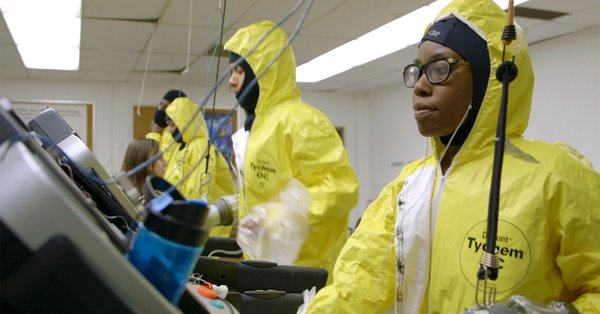Students suited up in personal protective equipment with heart monitors around their chests and temperature probes two feet down their nose are taking brisk walks on treadmills inside a lab room on the Stanford campus. It's a strange scene, but one with an important purpose: figuring out how to keep people cool while they’re wearing protective gear. Such people include firefighters and health care workers treating infectious disease, and the latter group is the reason biologist Craig Heller, PhD started this line of research. As he explained in a recent Stanford News article and video:
During the previous Ebola epidemic, these workers read about our core body cooling technology on the web, and they asked whether we could do something for them. In that hot environment and in their highly insulative personal protective gear, they could only work in the hot zone for 20-30 minutes before overheating.
Heller and Dennis Grahn, PhD, senior research scientist in the Heller lab, who have previously developed cooling systems for athletes and bomb-sniffing dogs, are in the final stages of testing a cooling system that takes advantage of radiators on the palm of the hand to lower body temperature. Their system can be worn like a hydration backpack under the sealed protective equipment and has tubes that feed cold water to pads on the palms. The pads are held there by fingerless gloves so that the user maintains full use of their hands.
Inside the backpack there is a source of cold water created by moving water past a frozen bladder. That water is then carefully mixed with warm water returning from the palm pads. Heller and Grahn’s previous work suggests that 15 to 16 degrees Celsius (59-61 Farenheit) is most effective temperature for this system.
With the experiments run by the students, in addition to previous tests of the system, the researchers have been able to at least double the amount of time a person can work comfortably in protective gear. In some cases, they have tripled and quadrupled work time. Now, the researchers are working on the final design for a manufacturable prototype while continuing research on the cognitive effects of overheating.
Video and image by Kurt Hickman




